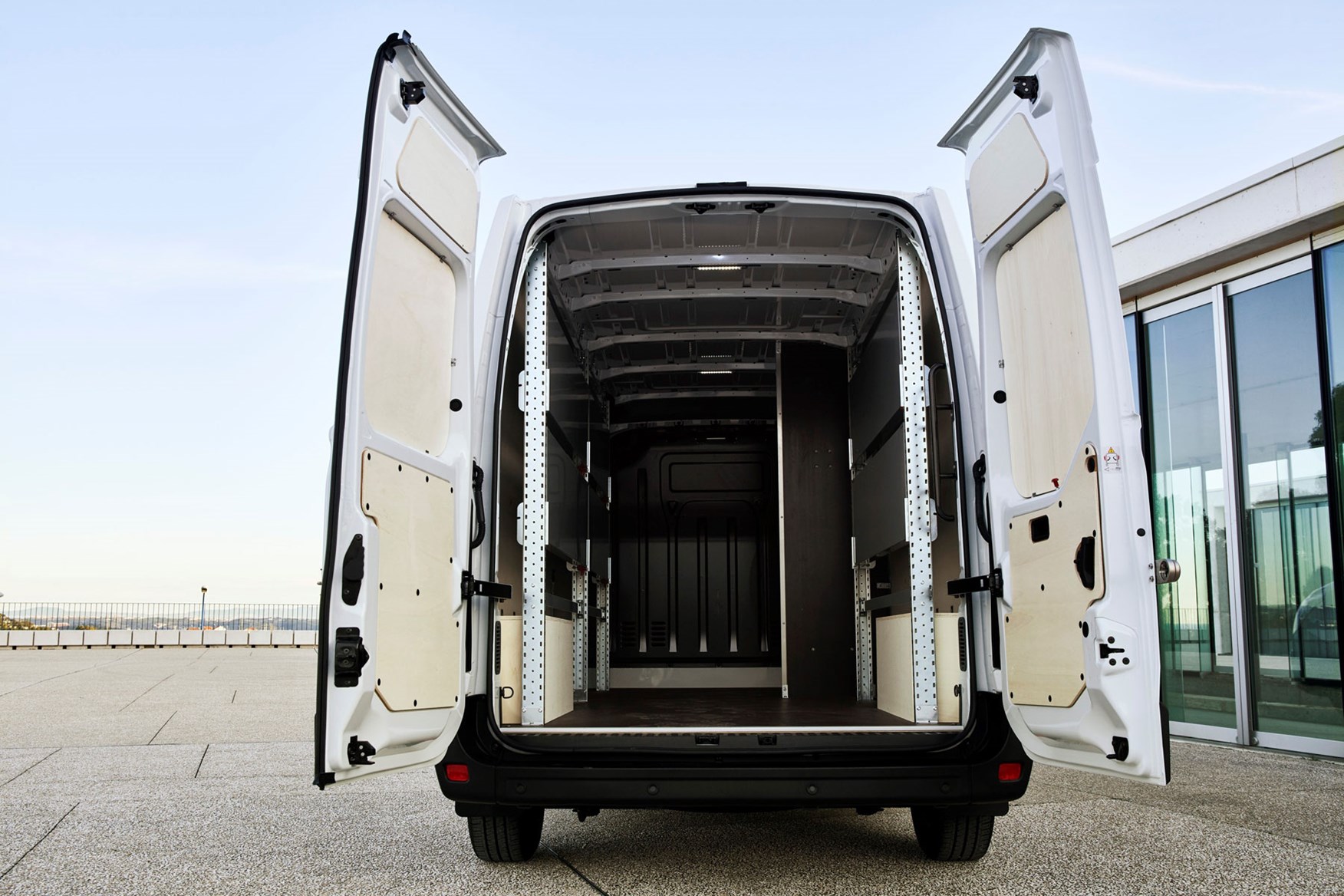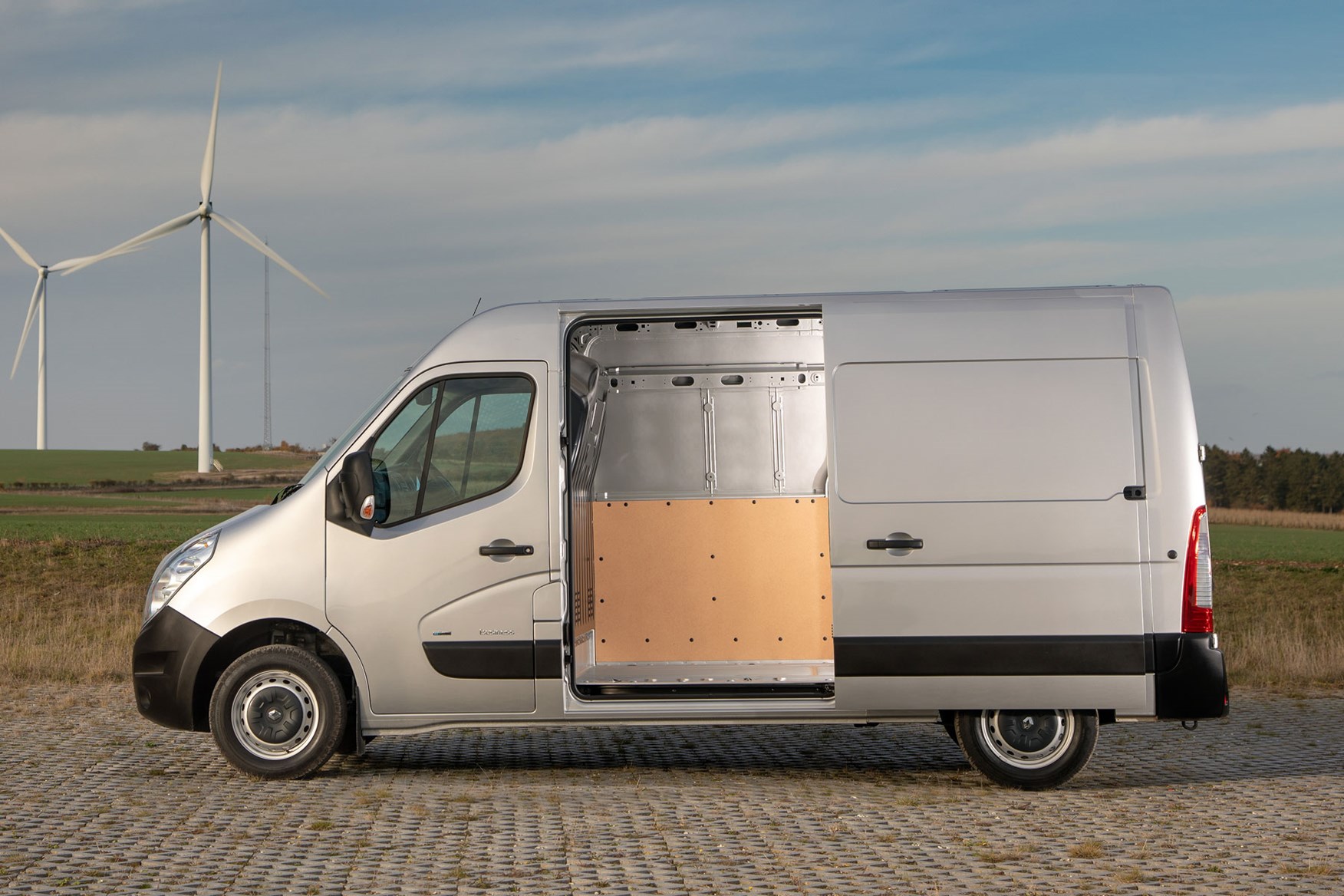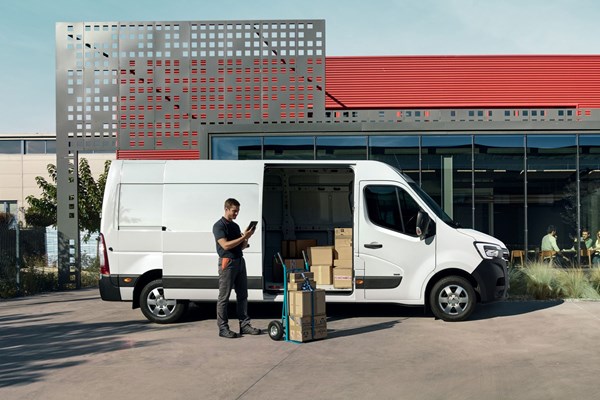Renault Master ZE dimensions (2018-on)
How big is the Renault Master ZE electric van? If you need to know the answer to that and more, you’ve come to the right place. On this page we’ve listed all the dimensions details – outside and inside – for Renault’s large electric van. You’ll find payload information for both the 3.1-tonne and 3.5-tonne versions here, too.
If you want to know more about what the Renault Master ZE is like to drive – including its driving range and charging time – and find out about standard equipment and cost, check out our main Renault Master ZE review page instead.
The Master ZE is an electric version of the diesel Renault Master, and like that more conventional large van, it comes in a wide range of sizes and versions – making it perhaps the most versatile electric van currently on sale.
Not only can you buy panel vans in three lengths and two roof heights, it’s also available in two lengths of platform cab and – new for 2020 – two lengths of chassis cab, and is therefore suitable for a wide range of conversions.

The platform cabs are ideal if you need the lowest possible loading height – in the form of a Luton Low Loader box van for instance – while the chassis cabs offer the opportunity for all-electric tipper and dropside conversions, or an electric Luton box van with a tail-lift that can still carry over 1.0-tonne (1,000kg).
All panel van versions come with a full steel bulkhead, eight or ten load-lashing tie-down points (each rated to 500kg) and a single sliding side door on the passenger side. There is short-wheelbase (SWB), medium-wheelbase (MWB) and long-wheelbase (LWB) to choose from.
Renault Master ZE exterior dimensions
These are the major exterior dimensions for the Master ZE panel van; there’s more info about the platform cabs and chassis cabs below.
| Renault Master ZE | L1H1 | L1H2 | L2H2 | L3H2 |
| Exterior length (mm) | 5,075 | 5,075 | 5,575 | 6,225 |
| Exterior height (mm) | 2,307 | 2,500 | 2,499 | 2,488 |
| Width including mirrors (mm) | 2,470 | 2,470 | 2,470 | 2,470 |
| Width without mirrors (mm) | 2,070 | 2,070 | 2,070 | 2,070 |
| Wheelbase (mm) | 3,182 | 3,182 | 3,682 | 4,332 |
| Front overhang (mm) | 869 | 869 | 869 | 869 |
| Rear overhang (mm) | 1,024 | 1,024 | 1,024 | 1,024 |
| Ground clearance (mm) | 182 | 182 | 174 | 172 |
The platform cab and newer chassis cab have both been offered in ML and LL specification – equivalent to L2 and L3 in terms of wheelbase length – though overall height and length will vary with the exact body or conversion fitted.
Renault Master ZE load area dimensions
These are the cargo area dimensions for the Master ZE electric panel van:
| Renault Master ZE | L1H1 | L1H2 | L2H2 | L2H3 |
| Max load length (mm) | 2,583 | 2,583 | 3,083 | 3,733 |
| Max load height (mm) | 1,700 | 1,894 | 1,894 | 1,894 |
| Max load width (mm) | 1,765 | 1,765 | 1,765 | 1,765 |
| Width between wheelarches (mm) | 1,380 | 1,380 | 1,380 | 1,380 |
| Side door opening height (mm) | 1,581 | 1,780 | 1,780 | 1,780 |
| Side door opening width (mm) | 1,050 | 1,050 | 1,270 | 1,270 |
| Rear door opening height (mm) | 1,627 | 1,820 | 1,820 | 1,820 |
| Rear door opening width (mm) | 1,580 | 1,580 | 1,580 | 1,580 |
| Load volume (cubic metres) | 8.0 | 9.0 | 10.8 | 13.0 |
Need more space? Then thanks to the platform cab’s Luton Low Loader option, as much as 20 cubic metres of load volume is available in combination with the Master ZE’s zero-emissions electric drive. We’re yet to see a rival offer anything close.
Electric vans have typically been weak for payload, due to their increased kerbweight caused by having to carry around heavy lithium-ion drive batteries. Initially, the Master ZE followed this formula, with its maximum panel van payload falling some 400kg shy of the best a diesel model could manage.

For 2020, however, Renault has begun offering 3.5-tonne (3,500kg) gross vehicle weight (GVW) version, alongside the original 3.1-tonne (3,100kg) models. Its payload potential has significantly increased as a result – though it still can’t quite match the best a diesel Master can offer.
Renault Master ZE payload
These are the latest payload figures for the Master ZE van (at time of writing in July 2020):
| Renault Master ZE payload | 3.1t | 3.5t |
| L1H1 panel van | 1,120kg | 1,490kg |
| L1H2 panel van | 1,090kg | 1,460kg |
| L2H2 panel van | 1,050kg | 1,420kg |
| L3H2 panel van | 970kg | 1,340kg |
| L2H1 platform cab | 1,370kg | 1,740kg |
| L3H1 platform cab | 1,350kg | 1,720kg |
| L2H1 chassis cab | n/a | 1,620kg |
| L3H1 chassis cab | n/a | 1,600kg |
It probably goes without saying, but just in case – the platform cab and chassis cab figures are before bodywork and other conversion figures.
Renault Master ZE towing capacity
Want to tow with a Master ZE? Then you’re out of luck – it has no towing rating at all.
That’s not unusual for an electric van. In fact, the only electric models that offer significant towing capability are the smaller Citroen e-Dispatch, Peugeot e-Expert and Vauxhall Vivaro-e, which are able to two up to 1,000kg (1.0-tonne).
Also read:
>> The Parkers guide to electric vans








